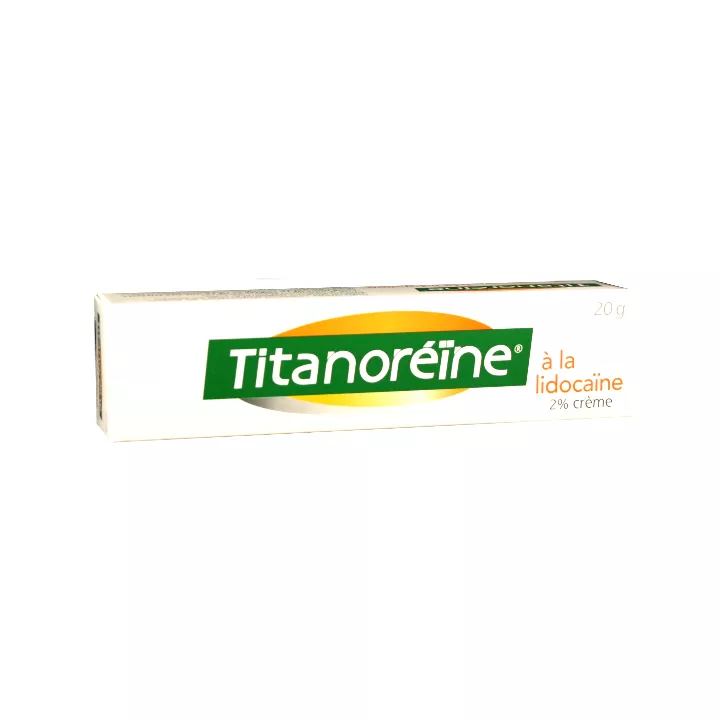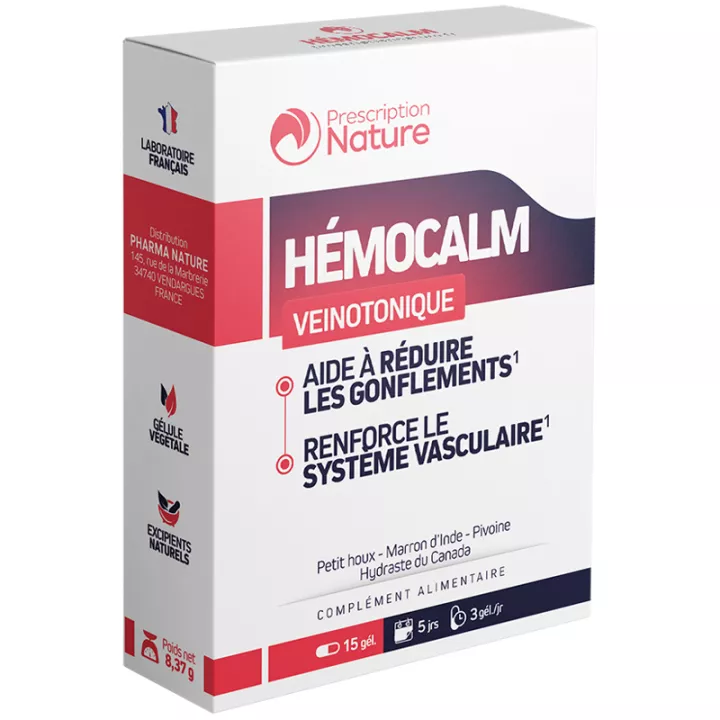NOTICE
ANSM - Updated: 02/11/2017
Name of the drug
TITANOREINE cream
Carrageenan / Titanium Dioxide / Zinc Oxide
framed
Read all of this leaflet carefully before you start using this medicine because it contains important information for you.
You should always use this medicine exactly as described in this leaflet or by your doctor or pharmacist.
· Keep this leaflet. You might need to read it again.
· Talk to your pharmacist for any advice or information.
· If you get any side effects, talk to your doctor or pharmacist. This also applies to any undesirable effect that is not mentioned in this leaflet. See section 4.
· You should talk to your doctor if you do not feel better or feel worse after 7 days.
What does this booklet contain ?
1. What is TITANOREINE, cream and in what cases is it used?
2. What information do you need to know before using TITANOREINE, cream?
3. How to use TITANOREINE, cream?
4. What are the possible side effects?
5. How to keep TITANOREINE, cream?
6. Contents of the package and other information.
1. WHAT TITANOREIN, CREAM AND WHAT IT IS USED FOR
Pharmacotherapeutic group: OTHER MEDICINAL PRODUCTS FOR THE TREATMENT OF TOPICAL USE OF HEMORROIDS AND ANTICAL CRACKS, ATC code: C05AX04.
TITANOREIN Cream is an anti-haemorrhoidal drug that works locally.
Local treatment of symptoms (pruritus, pain) related to the hemorrhoidal crisis.
You should talk to your doctor if you do not feel better or feel worse after 7 days.
2. WHAT YOU SHOULD KNOW BEFORE USING TITANOREIN, cream?
Never use TITANOREINE, cream:
· if you are allergic to carrageenates, titanium dioxide, zinc oxide or any of the other ingredients of this medicine, listed in section 6.
Warnings and precautions
Talk to your doctor or pharmacist before using TITANOREINE, cream .
· If the hemorrhoidal disorders do not give up in 7 days, it is essential to consult your doctor;
· If you have rectal bleeding or blood in the stool, talk to your doctor before using TITANOREINE.
· This medicine contains propylene glycol and may cause skin irritation.
· This medicine contains parahydroxybenzoate and may cause allergic reactions (possibly delayed).
· This medicine contains potassium sorbate and may cause local skin reactions (eg eczema).
children
Not applicable.
Other medicines and TITANOREINE, cream
Tell your doctor or pharmacist if you are taking, have recently taken or might take any other medicines.
TITANOREINE, cream with food and drinks
Not applicable.
Pregnancy and breast feeding
This medicine is to be avoided during pregnancy and lactation.
If you are pregnant or breast-feeding, think you may be pregnant or are planning to have a baby, ask your doctor or pharmacist for advice before taking this medicine.
Driving and using machines
This medicine has no or negligible effect on the ability to drive and use machines.
TITANOREINE cream contains propylene glycol, methyl, ethyl, propyl and butyl parahydroxybenzoates and potassium sorbate .
3. HOW TO USE TITANOREINE, cream?
Always use this medicine exactly as described in this leaflet or as directed by your doctor or pharmacist. Check with your doctor or pharmacist if in doubt.
The recommended dose is one application morning and evening and after each bowel movement, without exceeding 4 applications per day.
TITANOREINE is presented in the form of a tube of cream accompanied by a black plastic cannula.
Rectal way. Do not use orally.
Opening of the tube:
Unscrew the cap of the cream tube, place it upside down on the tube and screw it in order to pierce the lid so that the cream can come out.
Administration mode
The cream has a local action and must be applied on hemorrhoids. Hemorrhoids are piles of veins located either around the anus (external hemorrhoids) or inside the anus (internal hemorrhoids).
When the symptoms are due to external hemorrhoids, the administration of TITANOREINE, cream is done by taking a dab of cream at the end of the finger and applying it delicately around the anus.
When the symptoms are due to internal hemorrhoids, apply the cream inside the anus. This can be done either with the cream-coated finger (your hands washed well beforehand) or with the cannula in the box.
The use of the cannula is as follows:
· Once the tube is open (see section "Opening the tube"), screw the cannula onto the tube instead of the cap.
· Gently insert the cannula into the anal orifice, you will facilitate the introduction of the cannula by exiting some cream pressing the tube and spreading it on its end. The introduction of the cannula should not be done in force, especially if it hurts.
· Once the cannula is in place in the anus, gently press the tube to make out the equivalent of a dab of cream.
· Remove the cannula, unscrew it from the tube and clean it with warm water and soap before putting it back in the box.
· Close the cream tube with the cap.
Duration of treatment
The duration of treatment should not exceed 7 days.
If you have used more TITANOREINE, cream than you should
Immediately consult your doctor or pharmacist.
If swallowed, consult your doctor or pharmacist immediately or call a poison control center.
If you forget to use TITANOREINE, cream
Do not take a double dose to make up for the single dose you forgot to take .
If you stop using TITANOREINE, cream
Not applicable.
If you have any further questions about the use of this medicine, ask your doctor or pharmacist for more information.
4. WHAT ARE THE POSSIBLE SIDE EFFECTS?
Like all medicines, this medicine can cause side effects, although not everybody gets them.
Undesirable effects of unknown frequency (can not be estimated from the available data)
· Itching and rashes.
· Hypersensitivity reactions.
Reporting of side effects
If you get any side effects, talk to your doctor or pharmacist. This also applies to any undesirable effect that is not mentioned in this leaflet. You can also report side effects directly via the national reporting system: National Agency for the Safety of Medicines and Health Products (ANSM) and the network of Regional Pharmacovigilance Centers - Website: www.ansm.sante.fr .
By reporting side effects, you can help provide more information about the safety of the medicine.
5. HOW TO STORE TITANOREINE, cream?
Keep this medicine out of the sight and reach of children.
Do not use this medicine after the expiry date which is stated on the carton. The expiry date refers to the last day of this month.
Store at a temperature not exceeding 25 ° C.
Do not dispose of any medication in the sewage system or in the household garbage. Ask your pharmacist to eliminate medications you no longer use. These measures will help protect the environment.
6. CONTENTS OF PACKAGING AND OTHER INFORMATION
What TITANOREINE contains, cream
· The active substances are:
Carragheenates ................................................. .................................................. ..................... 2.50 g
Titanium dioxide............................................... .................................................. .................. 2.00 g
Zinc oxide............................................... .................................................. ....................... 2.00 g
For 100 g of cream.
· The other ingredients are: macrogol palmitostearate, saturated polyglycosyl glycerides, dimeticone, microcrystalline cellulose, propylene glycol, SEPICIDE® HB (methyl, ethyl, propyl and butyl parahydroxybenzoates, phenoxyethyl alcohol), potassium sorbate, purified water.
What TITANOREINE looks like, cream and contents of the pack
This medicine comes in the form of a 20g or 40g tube cream.
Not all presentations may be marketed.
Marketing Authorization Holder
JOHNSON & JOHNSON HEALTH BEAUTY FRANCE
1, RUE CAMILLE DESMOULINS
92130 ISSY-LES-MOULINEAUX
Operator of the marketing authorization
JOHNSON & JOHNSON HEALTH BEAUTY FRANCE
1, RUE CAMILLE DESMOULINS
92130 ISSY-LES-MOULINEAUX
Maker
MCNEIL IBERICA, SLU
ANTIGUA CENTRA NACIONAL II
KM. 32,800
28805 ALCALA OF HENARES (MADRID)
SPAIN
Or
CREAPHARM BESSAY SAS
AREA OF ACTIVITY COUNTY
03340 BESSAY-SUR-ALLIER
Names of the drug in the member states of the European Economic Area
Not applicable.
The last date this leaflet was revised is:
[to be completed later by the holder]
Other
Detailed information on this medicine is available on the ANSM website (France).
Health Education Council:
What is hemorrhoids and the hemorrhoidal crisis?
Hemorrhoids are veins located in the anal area (anus, rectum, and tissue surrounding them). They are normal, painless anatomical structures that only look pathological when they progress to hemorrhoidal disease.
Problems arise when a hemorrhoidal crisis occurs, caused by abnormal dilatation of these veins.
These dilated hemorrhoids can then be externalized to form a kind of "ball" in the anus. This hemorrhoidal crisis results in more or less discomfort. Itching, irritation, and small bleeding during or after stool (found on toilet paper or undergarments) are the trio of usual symptoms of hemorrhoids. Generally, the haemorrhoidal crisis is not serious and should be reduced in a few days.
Warning :
If the symptoms persist, it is necessary to consult. Pain and bleeding can be signs of complications or even more serious illness that only your doctor will be able to diagnose and treat.
To avoid :
In general, any excessive pressure exerted on the haemorrhoidal veins can cause congestion. Therefore, avoid:
· intestinal transit disorders: constipation leads to repeated thrusting efforts; diarrhea or the taking of irritating laxatives causes irritation of the mucous membranes;
· foods that can promote congestion of veins hemorrhoids and therefore the onset of the crisis: alcohol, spices.
·








